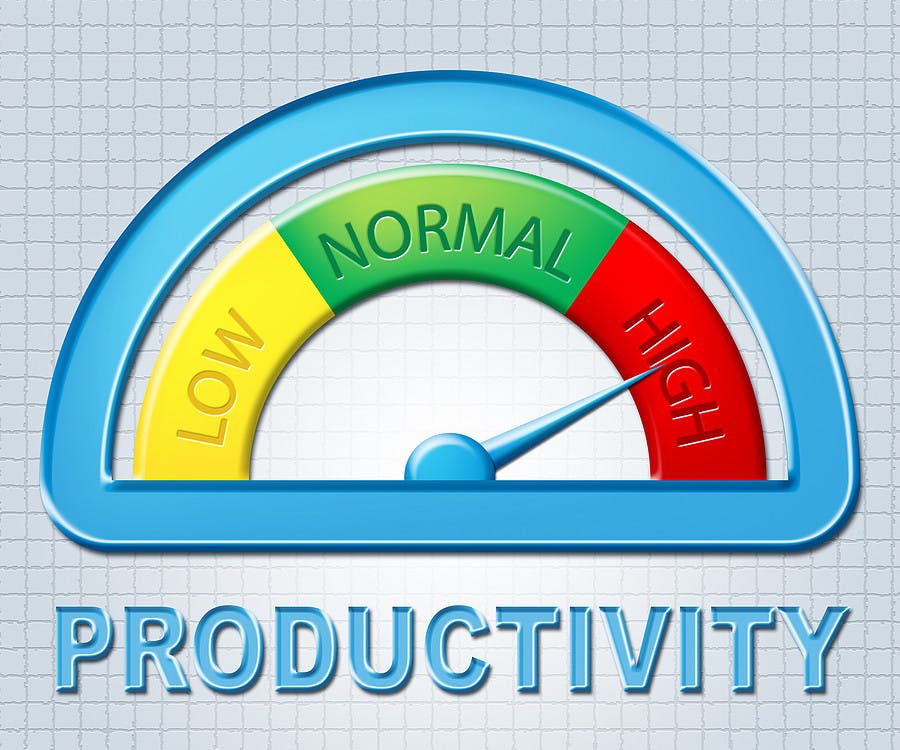Change has always been the only constant in the workplace, especially over the past six months. Employees have faced significant change as they’ve adjusted to remote work, adopted new virtual collaboration tools, managed concerns about job security, juggled childcare with work, and so much more.
While this uncertainty and change have been scary for employees, surprisingly, this hasn’t appeared to dampen employee motivation. Conversely, the pandemic seems to have pushed people to work harder. In fact, a recent Deutsche Bank survey found that Americans are feeling more productive now than before the pandemic.
But there is a reason for pause here. It’s quite possible that fear is a factor driving this phenomenon. The sudden, overwhelming sense of worry associated with the pandemic may have caused a spike in worker motivation, driving some pretty impressive results from a productivity standpoint.
However, while fear is a strong motivator for a brief period of time, it’s neither healthy nor sustainable for the long-term. In fact, many workers are already feeling burned out, with no end to the pandemic in sight. In the long run, leveraging fear-driven motivation tactics alone will likely set organizations back in their efforts to thrive in this new normal. We need a new perspective.
Re-engaging an exhausted workforce is not an easy task, but it’s critical to retaining talent and driving business success right now. And while there’s no one-size-fits-all solution to employee engagement, there are healthy ways to drive productivity.
Flexibility-Driven Productivity
The pandemic has placed a spotlight on the critical importance of work-life balance, as remote work has blurred the line between our personal and professional lives. With employees unsure of when it is appropriate to formally “sign off” for the day or continuously making exceptions to managing tasks after-hours, today’s workforce is especially prone to burnout. Consequently, flexible work offerings are critical to drive engagement.
Recently, software company Elephant Ventures announced that it would introduce a four-day work week for U.S. employees after seeing initial success (20% to 30% productivity increase) with this schedule in the Philippines. A New Zealand-based estate planning company, Perpetual Guardian, also experienced a 20% productivity increase after introducing a four-day work week, along with a 27% decrease in work-related stress and a 45% increase in employee work-life balance. These examples illustrate the striking impact a flexible approach to work can have on the employee experience.
However, employers don’t need to go to such dramatic lengths to incorporate flexibility. Other opportunities include providing people with the ability to sign on earlier and sign off later to better manage their physical health, mental wellbeing, and family obligations. Implementing reduced hours on days when business might be slower or encouraging employees to use all of their paid time off (even staycations offer a respite from burnout!) are other ways to support flexibility and balance.
Offering such options can serve as a significant long-term motivator for employees and may attract new talent as well.
Recognition-Driven Productivity
Recognition is another tactic that drives strong employee engagement during both good and more challenging times. In fact, for 90% of employees say that being recognized for a job well-done motivates them to work harder.
Recognition has become even more important during the pandemic, as people have shifted to working remotely. Less face time with managers in the office can minimize the real-time continuous feedback loop that employees crave — if organizations don’t implement remote listening and recognition strategies. Without the right systems in place, remote work dynamics can lead to employees feeling undervalued and unappreciated, resulting in lower levels of motivation and productivity.
Particularly during times of crisis, it’s important that recognition extends beyond traditional word-of-mouth tactics, such as mentions during staff meetings or in the context of one-to-one chats. To ensure that employees feel recognized for their accomplishments, workplaces ought to consider additional online communication channels that enable real-time conversations and rewards.
What’s more, recognition should not be a top-down effort alone. As organizations consider new recognition strategies, they should look for ways to encourage peer-to-peer praise, which can boost employee performance by up to 14%.
By cultivating a culture of recognition with these additional strategies, organizations can build an even more productive workforce, one that is motivated to drive long-term outcomes for their organization.
